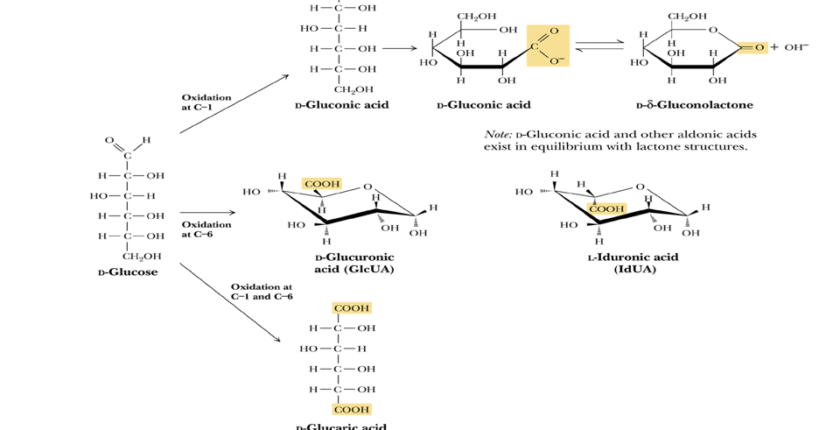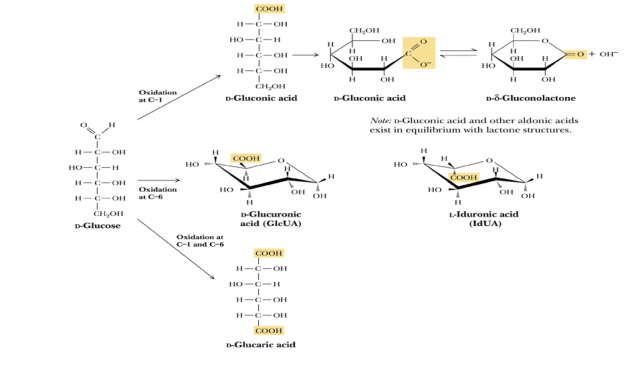Library
Gray Baby Syndrome and the Role of Glucuronic acid
- November 11, 2019
- Posted by: Namrata Chhabra
- Category: Case studies Chemistry of Biomolecules Chemistry of Carbohydrates Clinical Case discussions Learning resources Library Multiple-choice questions Multiple-Choice questions USMLE Content USMLE styled question bank

Case details
Infants have decreased ability to conjugate Glucuronic acid on to drugs such as Chloramphenicol. Administration of this antibiotic during the neonatal period can result in elevated plasma levels of the drug and a fetal shock-like syndrome referred to as Gray Baby syndrome.

(Image courtesy-Gray Baby Syndrome: What You Need to Know)
Glucuronic acid is produced from Glucose in the Uronic acid pathway by the process of:
A. Oxidation
B. Reduction
C. Hydrolysis
D. Carboxylation
E. Decarboxylation.
Details
The correct answer is- A- Oxidation.
Glucuronic acid is produced from Glucose by oxidation in the Uronic acid pathway, which is an alternative pathway of glucose utilization. Glucuronic acid in its activated form (UDP- Glucuronic acid), is used for detoxification of drugs, toxins, hormones and most importantly bilirubin. Conjugation of Glucuronic acid imparts polarity, which makes these agents water-soluble so that they are easily excreted out from the body. Impaired conjugation of these toxic agents leads to the accumulation of these agents in the lipid-rich areas (as they are lipid-soluble), producing harmful effects. Glucuronic acid and its epimer Iduronic acid are used for the synthesis of heteropolysaccharides.
Basic concept
The monosaccharides can be oxidized to sugar acids by the oxidation of :
1) Aldehyde group (C1) to form Aldonic acid, or
2) Primary Alcoholic group (C5) in an aldohexose to form uronic acid or
3) Both groups to form Saccharic acid.
Details of Reactions- (Figure)
1) Oxidation of Aldehyde group- Under mild conditions,e.g., in the presence of Hypobromous acid, the aldehyde group is oxidized to form Aldonic acid. Thus, Glucose is oxidized to Gluconic acid, Mannose to form Mannonic acid and Galactose to form Galactonic acid. Formation of Gluconic acid by the activity of Glucose oxidase is the basis for the Quantitative estimation of urinary and blood Glucose.
2) Oxidation of Primary Alcoholic acid- Under special conditions when the aldehyde group is protected, and the molecule is oxidized at the primary alcoholic group the product is a Uronic acid. Thus Glucose is oxidized to form Glucuronic acid, Galactose to form Galacturonic acid and Mannose is oxidized to Mannuronic acid.
3) Oxidation of both Aldehyde and Primary Alcoholic group-Under strong acidic conditions (Nitric acid and heat) the first and the last carbons are simultaneously oxidized to form dicarboxylic acids, known as Saccharic acids. Glucose is thus oxidized to form Glucosaccharic acid, Mannose to Mannaric acid and Galactose to Mucic Acid. The mucic acid forms insoluble crystals and is the basis for a test for the identification of Galactose.

Figure- formation of three types of sugar acids by the oxidation of glucose.
As regards other options-
B. Reduction- Reduction of glucose forms alcohol. Sorbitol is produced from Glucose by reduction.
C. Hydrolysis – Glucose is not hydrolyzed as such to form some important compound.
D. Carboxylation- Similarly carboxylation of glucose is uncommon.
E. Decarboxylation of glucose takes place in the HMP pathway to form pentose, but that too takes place in the phosphorylated form.
Further reading:
Author:Namrata Chhabra
Leave a Reply Cancel reply
You must be logged in to post a comment.
